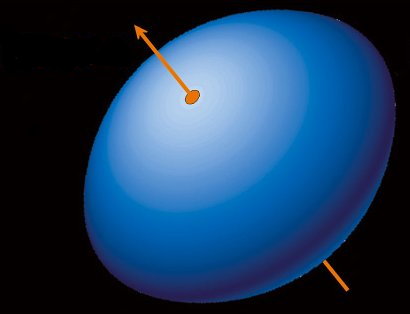Homepage
Rivi


Intereferometry shows the shape of stars, from ESO press release ESO PR-14/03.
More emission line stars were found soon, and one had to make subclasses to keep some overview. γ Cas is a main sequence B-type star, and together with other such stars showing hydrogen emission it forms the class of "Be stars", where the "e" stands for emission.
In the 1930s, finally, Otto Struve worked out a picture of Be stars that in many aspects has turned out to be true: The B-type star in the center is rotating rapidly, one stellar "day" is a matter of hours, days at most, rather than a month like for our sun. Rotation is actually so fast that the Be stars are no longer spheres, but rather pill-shaped. Struve further speculated that those stars would be surrounded by a disk, basically thrown off the stellar surface by the rapid rotation. While there is a disk thrown out by the star, and rapid rotation provides much of the energy the gas needs to leave the star and form the disk, it was found that just rotation is not enough.

This review paper gives a good introduction into the subject, while Classical Be Stars - Gaseous Discs Around the Most Rapidly Rotating Stars provides an in-depth disussion.
Rivi; Sep 2007